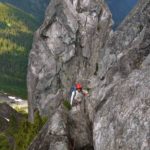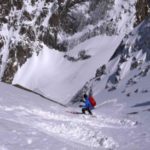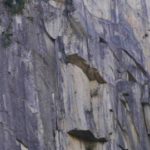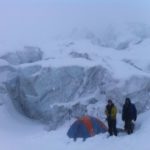Thanks for making your reservation!
We look forward to climbing with you soon. In the meantime, we have a bit of homework for you so when your trip date arrives all our ducks are in line, expectations are clear, and we don't waste any time getting you to the alpine.
To the right is a check list of homework items which are found below. At any time don't hesitate to get in touch with any questions.
Sincerely,
The Altus Crew
Pre-Trip Check List
- Fill out the Participants Info (each participant)
- Read and Sign the Participant's Waiver
- Read and Sign the Health Waiver
- Check out The Gear List
- Review Prerequisites and Info Videos
- Make note of Meeting Time and Location
- The Details (cancellation policy and what's included & not included)
Step 1
Step 2
Read and Sign Participant's Waiver
Hit the link below and be transported to another tab where you will find our waiver. Please read, sign and submit the waiver-
Step 3
Read and Sign Participant Declaration of Health and Exposure
Hit the link below and be transported to another tab, where you will find our waiver. Review, sign, and submit the Declaration of Health and Exposure in regards to COVID-19 exposure. Once you are finished come on back to this page for the remaining riveting steps
Step 4
The Gear List
Below is a sample gear list. Requirements may very according to trip length, conditions, weather, and objective. Don't hesitate to reach out if you have any questoins.
Equipment
Boots
These need to be sturdy leather or leather/cordura boots with lug soles and good ankle support. A good boot would be the La Sportiva Glacier Mountaineering boot (good for snow and ice climbs but not as good for alpine rock routes) or the La Sportiva Trango S Evo (good for alpine rock routes and OK for snow climbs). Light hiking boots, especially ones that are not leather, are not appropriate. Your boots are the single most important piece of gear for this trip, make sure you have the right kind and make sure they fit well and won’t give you blisters.
Crampons
These need to fit your boot well – when fitted properly they will stick to your boot without the straps or bindings. For steeper/longer ice routes a pair of heavier, rigid 12-point crampons are required, such as the Petzl Vasak.
Ice Axe
Your ice axe should be about 55 - 65cm long depending on height. Examples include the Black Diamond Venom, Petzl Sumtec or Summit, or Grivel Air Tech Evo.
Helmet
Designed for climbing. Petzl Ecrin Rock, Meteor, etc.
Harness
A sit harness with a belay loop is required. Your harness needs to be free of damage and excessive wear and less than 10 years old.
Backpack > 30L (> 50L for overnights)
Your pack needs to be big enough fit all your gear plus group gear and food. Make sure you can fit everything in before you leave home with room to spare for group gear.
Hiking poles
Collapsible poles with a summer, hiking basket. No fixed poles
Crevasse rescue kit (we can provide)
- 2x 5 meter - 6 mm prussics
- 2x 1.5 meter - 6mm prussics
- 1 x 120cm sewn sling
- 1 x Ice screw
- 4 x Locking carabiners
- 2 x Non locking carabiners
- 1 x Belay device
Clothing:
Base Layers
Thermals top/bottom, Socks - as we will be spending nights in huts or camping- I would recommend bringing extra socks but only 1 set of thermals should be sufficient for a 2 or 3 trip.
Climbing Layers
Mid-weight soft shell jacket and pants are recommended. Something that will provide protection from the elements but remain breathable.
Waterproof Shell (gore-tex), pants/jackets
Lightweight and packable. Often the waterproof jacket will be worn where the pants are often only worn in the most extreme conditions. Pants with full side zips are highly recommended.
Insulated Jacket
A midweight insulated jacket, either down or synthetic. I recommend synthetic and something with a hood.
Warm Headwear
Gloves
A least 2 pairs! One lighter weight for climbing and another heavier pair for cold temperatures.
Camping Gear (overnights only):
Sleeping Bag
Lightweight bag for sleeping in the hut. 0 to -5 degree rate back should be sufficient this time of year. -10 - 20 degree for camping.
Sleeping Pad
Inflatable or foam
Tent
3 or 4 season tent. 2 or 3 person (We will be sharing tents and coordinating this prior to the course)
Sandals or shoes for around camp
Sunglasses, sunscreen, lip protection
At the very minimum, a 30 SPF sunscreen and lip protection is required. Full sunblock for your lips is recommended. Sunglasses with wrap-around coverage and dark lenses are required - Cat 3 or 4.
Small first aid and repair kit
Your guide will have a major first aid and repair kit but you should bring some band-aids, blister protection (include blister pads and duct tape), headache pills, head cold/antihistamine medication, cough drops, rash cream, pocket knife.
Water bottle and/or thermos
1 - 2 liters capacity
Headlamp
Bring extra batteries.
Camera
Step 5
Instructional Videos
Essential Knots
Climbing Anchors
Identifying Mountain Hazards
Setting Up Top Rope Anchors
Traditional Gear Climbing
Roping Up for Glacier Travel
Step 6
Meeting Place and Time
The meeting time and location will depend on your objective. Keep an eye on your inbox for updates!
Step 7
The Details
Still Have Questions or Concerns?
Please do not hesitate to contact us with any questions, concerns or requests on how we can make this the best trip ever!





